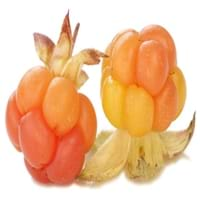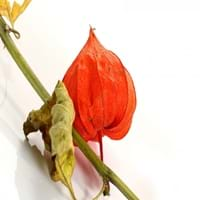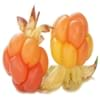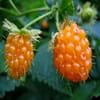Health Benefits
Cancer prevention, Heart care
Anti-oxidant properties, Anti-inflammatory properties, Cancer prevention, Maintains healthy cholesterol level, Reduces blood circulation problems, Treatment of cough, fever & sore throat, Treatment of Hypertension
General Benefits
Anti oxidant properties, Boosts immune system, Digestive aid, Improves blood circulation, Maintains healthy cholesterol level, Strengthens bones
Treatment of asthma, Treatment of cataract, Treatment of hepatitis, Treatment of macular degeneration, Treatment of neurodegenerative diseases
Skin Benefits
Anti-aging benefits, Reduces wrinkles, Skin rejuvenation
Treatment of Rheumatism & Dermatitis, Treatment of Skin Inflammation
Hair Benefits
Protects hair
Unknown
Side Effects
Allergic reaction
Hypertension, Ventricular Tachycardia
Best Time to Eat
As a snack in the late afternoon, Don't consume at night and before bed, Eat the fresh ones, avoid mixing with any other foods, don't eat after meal., Morning time (before lunch)
As a snack in the late afternoon, Eat the fresh ones, avoid mixing with any other foods, don't eat after meal., Morning time (before lunch), Strictly avoid empty stomach
Vitamin A (Retinol)
Not Available
Vitamin C (Ascorbic Acid)
Vitamin E (Tocopherole)
Not Available
Water Content
Not Available
Calories in Fresh Fruit with Peel
Calories in Fresh Fruit without Peel
Not Available
Not Available
Calories in Frozen Form
Not Available
Not Available
Calories in Dried Form
Not Available
Not Available
Calories in Canned Form
Not Available
Not Available
Type
Berry
Fruit vegetable
Season
Winter
Spring, Summer
Varieties
Not Available
Physalis franchetii, Physalis pruinosa, Physalis peruviana, Physalis heterophylla and Physalis philadelphica
Color
Orange, Pink, Yellow
Bright Yellow, Orange
Inside Color
Orange
Orange
Origin
Arctic Tundra
Chile, Peru
Soil Type
Loam, Well-drained
NA
Climatic Conditions
Cold, Warm
NA
Facts about
- Cloudberry is also called as bakeapple, knotberry , knoutberry, aqpik or low bush salmonberry.
- In Nordic countries, cloudberries are used to make traditional liqueurs.
NA
Other Countries
Canada, Denmark, Finland, Iceland, Sweden, United States of America
NA
Top Importer
Norway
Netherlands
Top Exporter
Finland
Colombia
Botanical Name
Rubus chamaemorus
Physalis Peruviana
Synonym
Not Available
Alkekengi, Herschellia & Pentaphitrum
Subkingdom
Tracheobionta
Tracheobionta
Division
Magnoliophyta
Magnoliophyta
Class
Magnoliopsida
Magnoliopsida
Subclass
Rosidae
Asteridae
Family
Rosaceae
Solanaceae
Species
R. chamaemorus
Physalis
Generic Group
Not Available
Not Available
Difference Between Cloudberry and Physalis
We might think that Cloudberry and Physalis are similar with respect to nutritional value and health benefits. But the nutrient content of both fruits is different. Cloudberry and Physalis Facts such as their taste, shape, color, and size are also distinct. The difference between Cloudberry and Physalis is explained here.
The amount of calories in 100 gm of fresh Cloudberry and Physalis with peel is 51.00 kcal and 77.00 kcal and the amount of calories without peel is Not Available and Not Available respectively. Thus, Cloudberry and Physalis belong to Low Calorie Fruits and High Calorie Fruits category.These fruits might or might not differ with respect to their scientific classification. The order of Cloudberry and Physalis is Rosales and Solanales respectively. Cloudberry belongs to Rosaceae family and Physalis belongs to Solanaceae family. Cloudberry belongs to Rubus genus of R. chamaemorus species and Physalis belongs to Physalis genus of Physalis species. Beings plants, both fruits belong to Plantae Kingdom.









